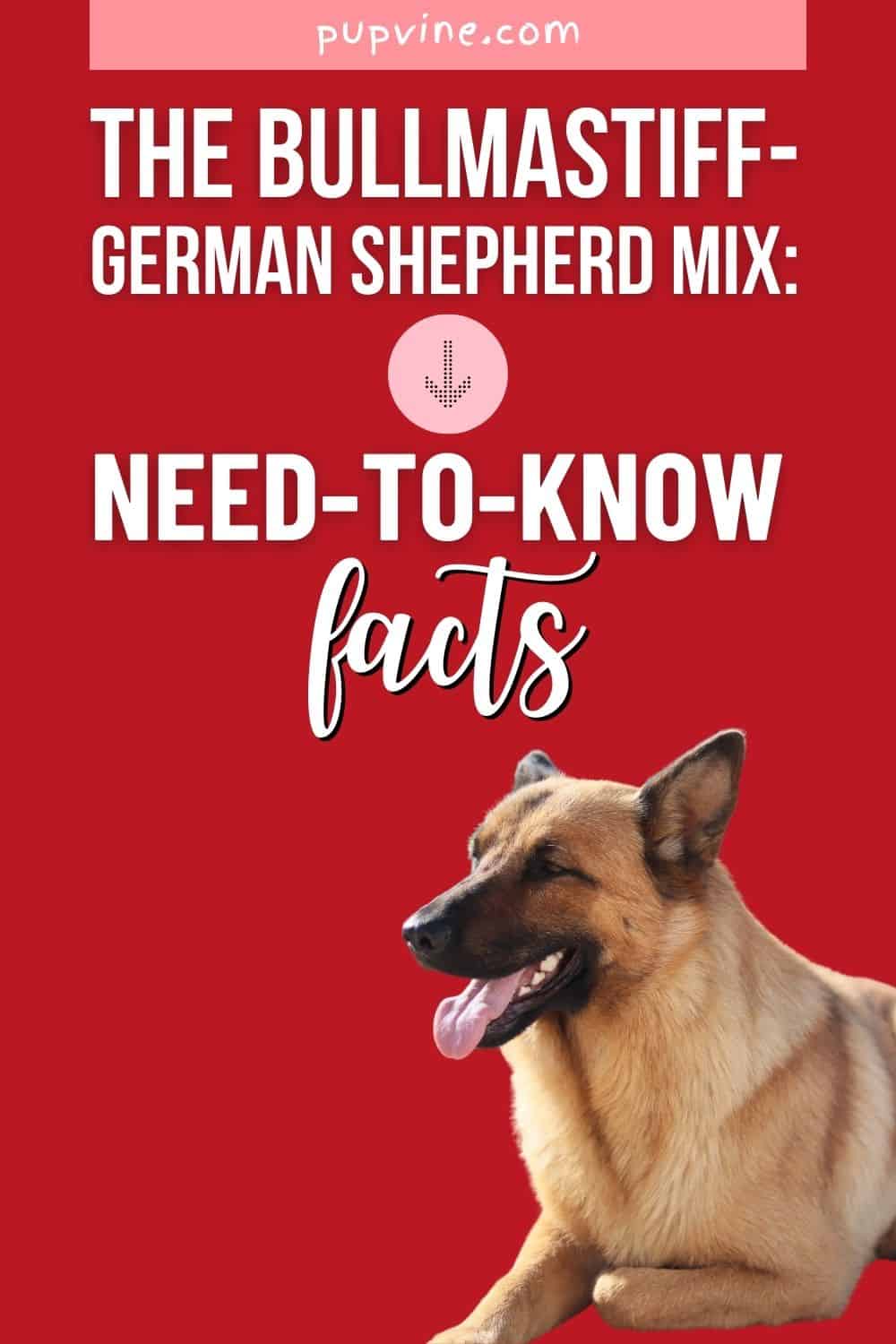The Bullmastiff – German Shepherd mix is everything you need if you love big and intelligent dog breeds. If you know how to handle their energy and size, they can be fantastic pets for any dog lover out there.
But, what do you really need to do if you want to become a proud owner of a Mastiff Shepherd? Are there some special requirements for these guide dogs?
Here’s what you need to know about this glorious dog breed.
The German Shepherd – Mastiff Mix: Breed Overview
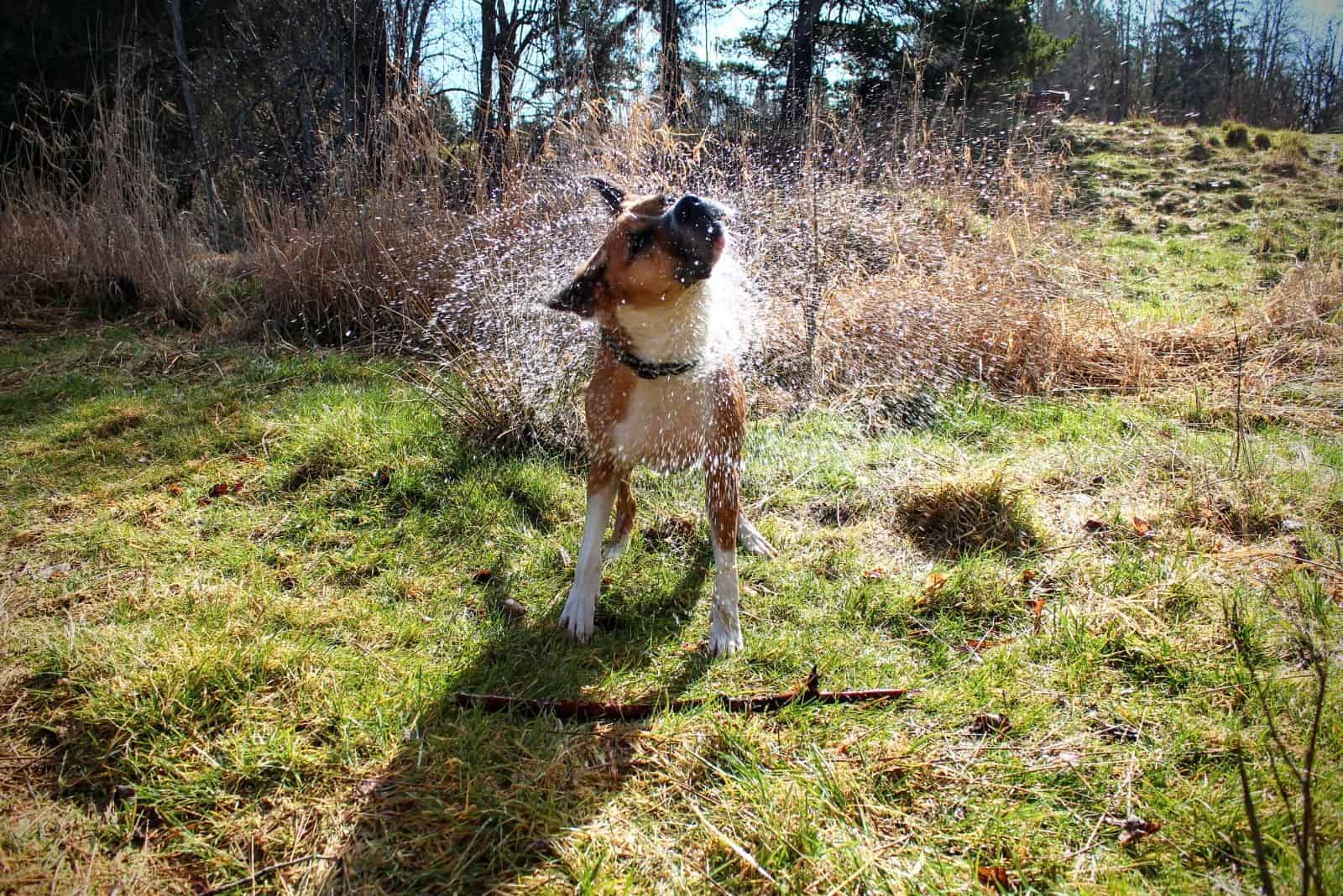
The Bullmastiff – German Shepherd mix, also known as a Mastiff Shepherd, is a designer dog hybrid. In other words, it is a fairly new dog breed created by ‘mixing’ a German Shepherd with a Mastiff to create hybrid puppies.
Since it isn’t common to find a German Shepherd – Mastiff mix, this breed is still relatively unknown to most aspiring dog owners out there.
As this is a new breed, the dog may vary in physical appearance once he’s fully grown. Some Mastiff Shepherds look more like a GSD while others will resemble Mastiffs. However, some standard features usually include:
• A large abdomen
• Large paws
• A robust muzzle
• Folded ears
• Brown fur with black patches
Depending on genetics, Mastiff Shepherds can vary in size. Usually, they’ll stand between 1.9 and three feet in height and measure between 23 and 27 inches at the shoulders.
Find Out More: Bullmastiff Growth Chart: They’re Large & They’re In Charge
When it comes to the weight of a Bullmastiff – German Shepherd mix pup, this, too, can be very different depending on the dog. They can weigh anywhere between 80 and 200 lbs.
Usually, if puppies come from a purebred English Mastiff, they’ll grow up to be very large. It would be best to expect that your pooch will grow into a very big dog.
While most Mastiff Shepherds are brown, their fur color may also vary. It isn’t uncommon to see a Bullmastiff – German Shepherd mix in red, gray, or even black.
Some may even have brindle coat colors, especially if you have a Neapolitan or English Mastiff – German Shepherd Mix. However, most dogs will have brown eyes.
If you look at some of the many pics on sites, such as Imgur or Flickr, you might say that a Mastiff Shepherd looks most like a boxer.
Of course, like with every hybrid breed, you have to understand that the American Kennel Club (AKC) doesn’t recognize Mastiff Shepherds as a unique breed.
This is because a species needs to have standard features that most dogs share in order for the AKC to put it on its list. Still, this shouldn’t matter at all.
A pup isn’t made by how well his breed is accepted, and this shouldn’t influence the amount of love you give him.
The Breed’s Temperament
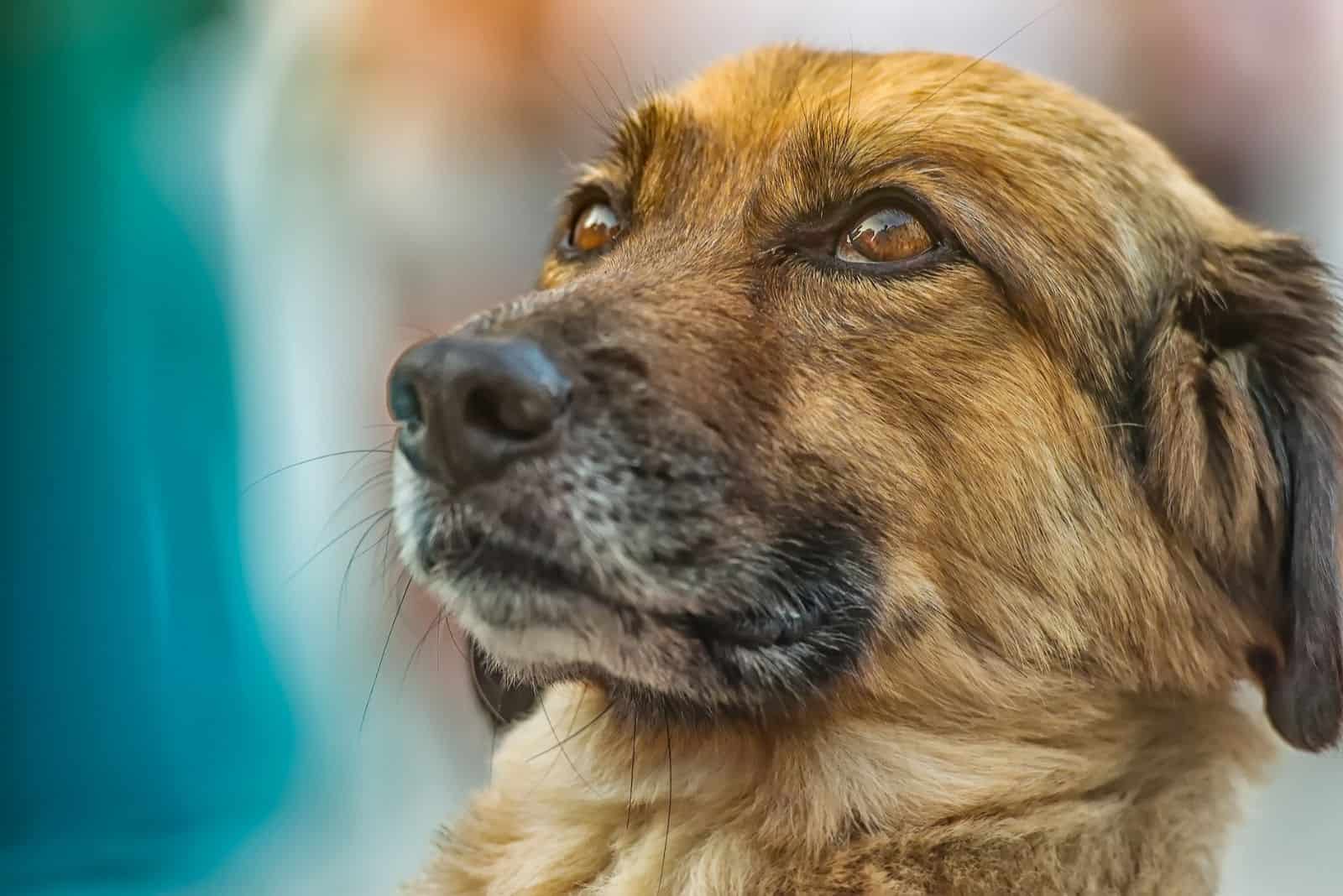
While every dog is individual, there are some common personality traits in almost every Bullmastiff – German Shepherd crossbreed.
If we explain this breed in just a few words, we could say that Mastiff Shepherds are gentle giants that are somewhat stubborn.
However, we’ll dive a bit deeper, so you can have a better idea of what you can expect.
Mastiff Shepherds are generally calm, gentle, and docile cuties. They are fairly quiet dogs that are exceptionally good with children.
You can leave most Mastiff Shepherds with your kids and be confident that nothing wrong will happen.
However, we would still recommend socializing every puppy as early as possible. This way, you’ll make sure your mixed puppies are trained out of any possible aggressive behavior.
Nevertheless, in this hybrid breed, Mastiff genes ensure that your pooch is very laid back and a real sweetheart.
At the same time, Mastiff Shepherds have a lot of features from the German Shepherd side of their family tree. The most important GSD trait they have is their loyalty.
A Bullmastiff – German Shepherd mix is very protective of his human parents.
If you don’t socialize him well, then he may even be hostile toward strangers. This shouldn’t be a surprise as both pup’s parents are excellent guard dogs or even herding dogs.
This makes a Mastiff Shepherd somewhat similar to a Doberman.
It’s essential to train and socialize your four-legged companion early on. This is likely the only way you will ensure that the sweet part of his personality overrules.
Considering how large these dogs can get, you don’t want to end up with an overprotective, borderline aggressive 150 lbs canine.
Health Risks

As it is with any large dog, a Bullmastiff – German Shepherd mixed doggy can experience certain health issues. Most of these issues are size-related and are shared with many dog breeds, such as the Labrador, the Husky, the Pit Bull, or the Cane Corso.
These concerns include:
• Joint issues
• Stomach problems
• Eye diseases
• Elbow dysplasia
• Bloat
• Indigestion
We’ll go a bit more in-depth in a second. The average Bullmastiff lifespan is around seven years, but some of these problems can significantly shorten a breed’s lifespan.
On the other hand, a German Shepherd usually lives longer, between ten and 14 years. On average, a Bullmastiff – German Shepherd mix will live eight to 12 years.
Joint issues
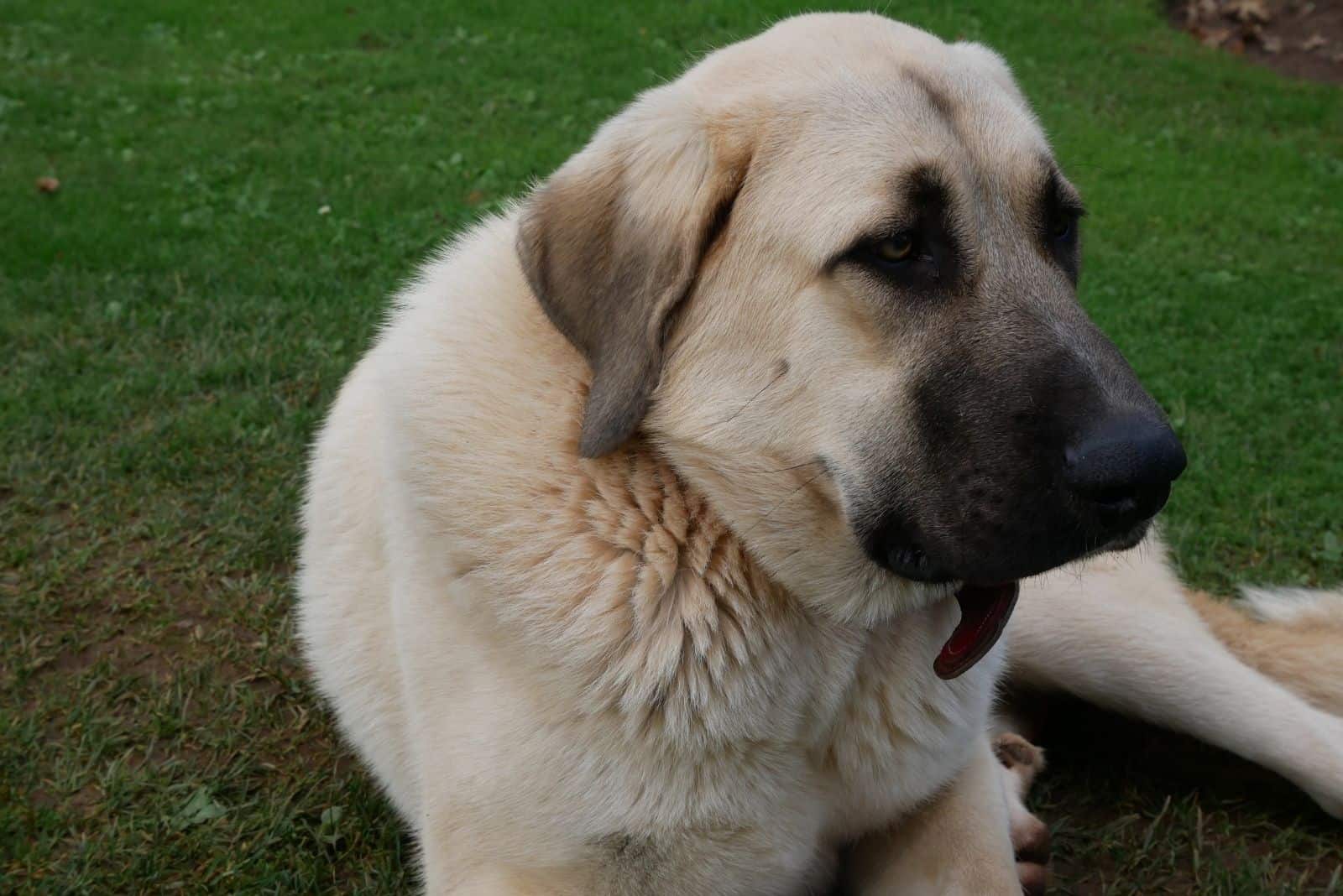
Joint issues are a common concern with all giant dog breeds. As your pooch grows older, you can expect him to experience some problems with walking. This may even influence his everyday activities.
The most common joint issues that a Bullmastiff – German Shepherd mix experiences are elbow and hip dysplasia. These two issues can be a massive problem for your beloved pet.
One of the things that worsen a dog’s joint health is a lack of activity. If a dog doesn’t spend enough time running outside, his bones will suffer.
However, another thing that worsens a dog’s bone health is a poor diet. If you don’t give your canine proper nutrition, his health will suffer. Not to mention that a Mastiff Shepherd’s weight affects his bones.
If he is overweight, it will cause problems for his joints. If your pup is chubby, then he’s more likely to experience severe joint aches.
Some of the signs of the onset of joint issues are:
• Weakness in limbs
• Avoidance of walks
• Lethargy
• Limping
• Aggressive behavior
Dogs that are in pain are more likely to nip at you, especially if you accidentally touch the sore area. If your friendly dog suddenly shows signs of aggression, it can be a warning sign of a painful disease or injury. Joint problems are the main reason why an older dog suddenly becomes grumpy.
Eye diseases
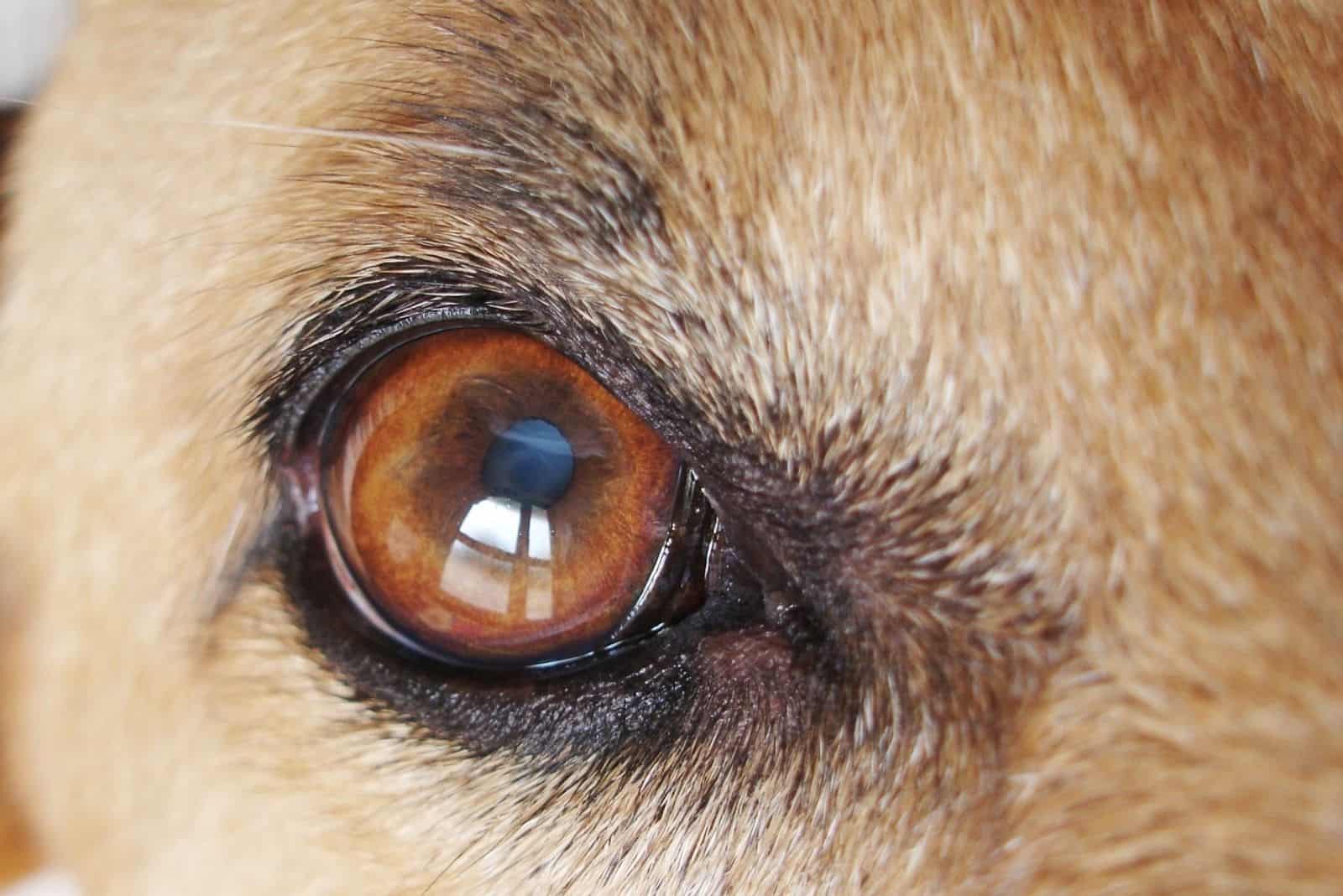
Another common concern for any Bullmastiff – German Shepherd mix owner is eye diseases. Cataracts and blindness can occur in older dogs, and both will impact the life quality of your four-legged best friend.
A somewhat safer, but still painful disease your pup can experience is a cherry eye. This disease is caused by the prolapse of a dog’s third eyelid. This leaves a visible pink or red lump in the corner of your pet’s eye.
Cherry eye can disappear on its own, but it’s always better to contact a vet. If left untreated, this issue can lead to irritation and dryness. Inflammation of the affected eye isn’t uncommon either.
If a severe infection happens, your dog will be in a lot of pain. On very rare occasions, this may even cause blindness.
Usually, cherry eye isn’t a reason to panic. However, it would help if you didn’t leave anything to chance. A vet should check any changes in your dog’s eye.
Think about how you felt the last time you experienced some eye irritation! Don’t let your pooch be in pain any longer than it already has to be.
Stomach problems
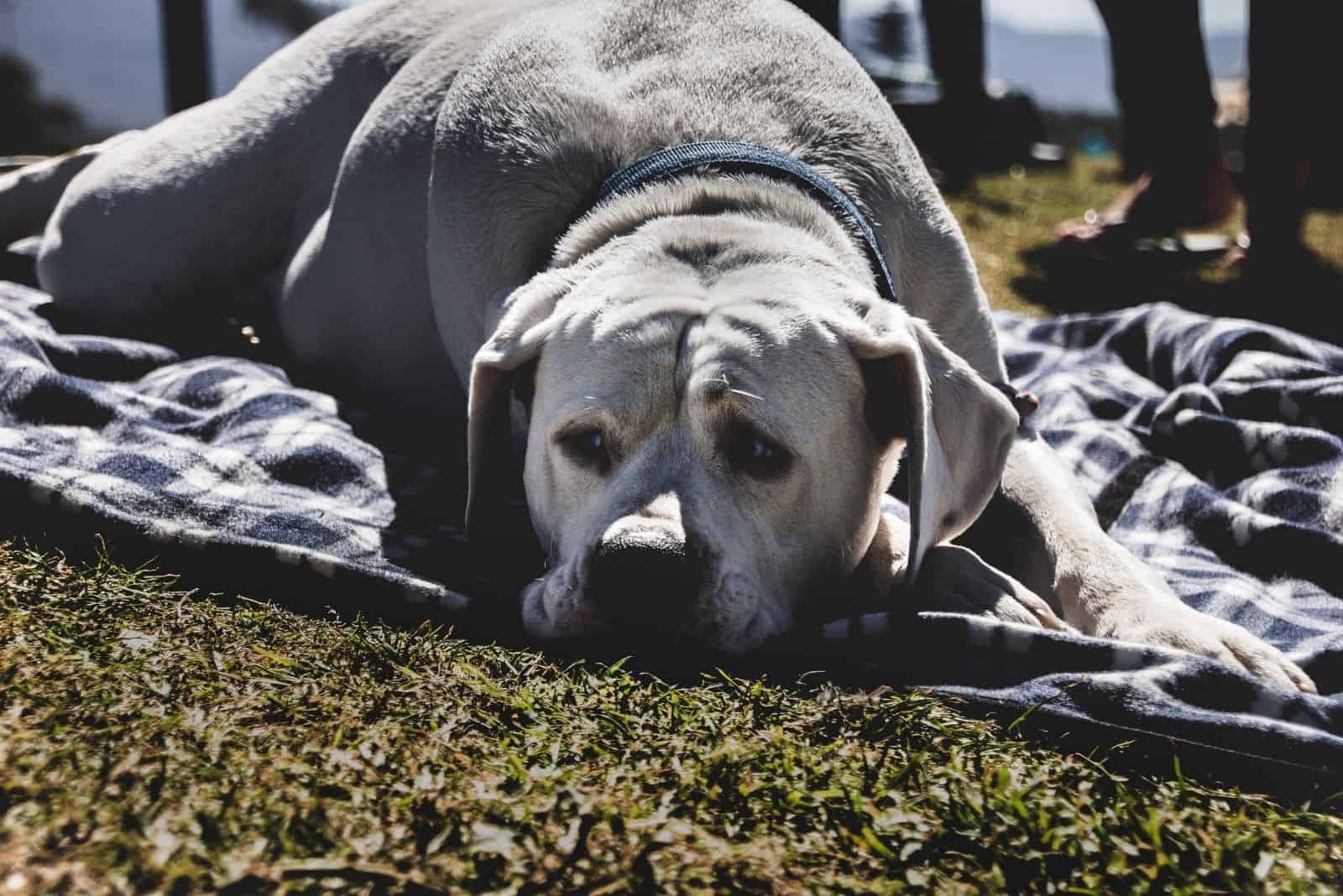
Probably, the most severe health issue with any large mixed breed is connected with the stomach and the digestive system. If you’ve ever owned a Golden Retriever or a Great Dane, you’ll know what we’re talking about.
Common digestive problems are prevalent among big dogs; therefore, it’s essential to give your dog proper nutrition. Otherwise, he might experience some painful (and smelly!) stomach issues.
However, the most dangerous thing that can happen is bloating. Bloating occurs when a canine’s stomach fills with food, fluid, or gas. This makes the stomach expand and put pressure on surrounding organs.
On some occasions, both ends of your pup’s stomach may twist. This causes a lot of pain and discomfort for your pet, and it will lead to indigestion in a very short time.
If left untreated, premature death is very common. Bloating may also lead to malnutrition and weight loss.
Some signs of bloating are:
• Restlessness
• Drooling
• A swollen stomach
• Anxiety
• Gag reflex, but without vomiting
• Pacing
• Stretching
• Whining
If the condition worsens, symptoms may include:
• Pale gums
• Short breath
• Rapid heartbeat
• Lethargy
• Collapse
What is the most concerning about this health issue is that your dog may not show any bloating symptoms for a very long time. This leads to shock, and usually, sudden death.
Because of this, it’s essential to get your dog to the vet if you suspect any stomach issues. While gassing and a painful tummy are normal, this may become something much worse.
How to Care for Your Bullmastiff – German Shepherd Mix Puppies?
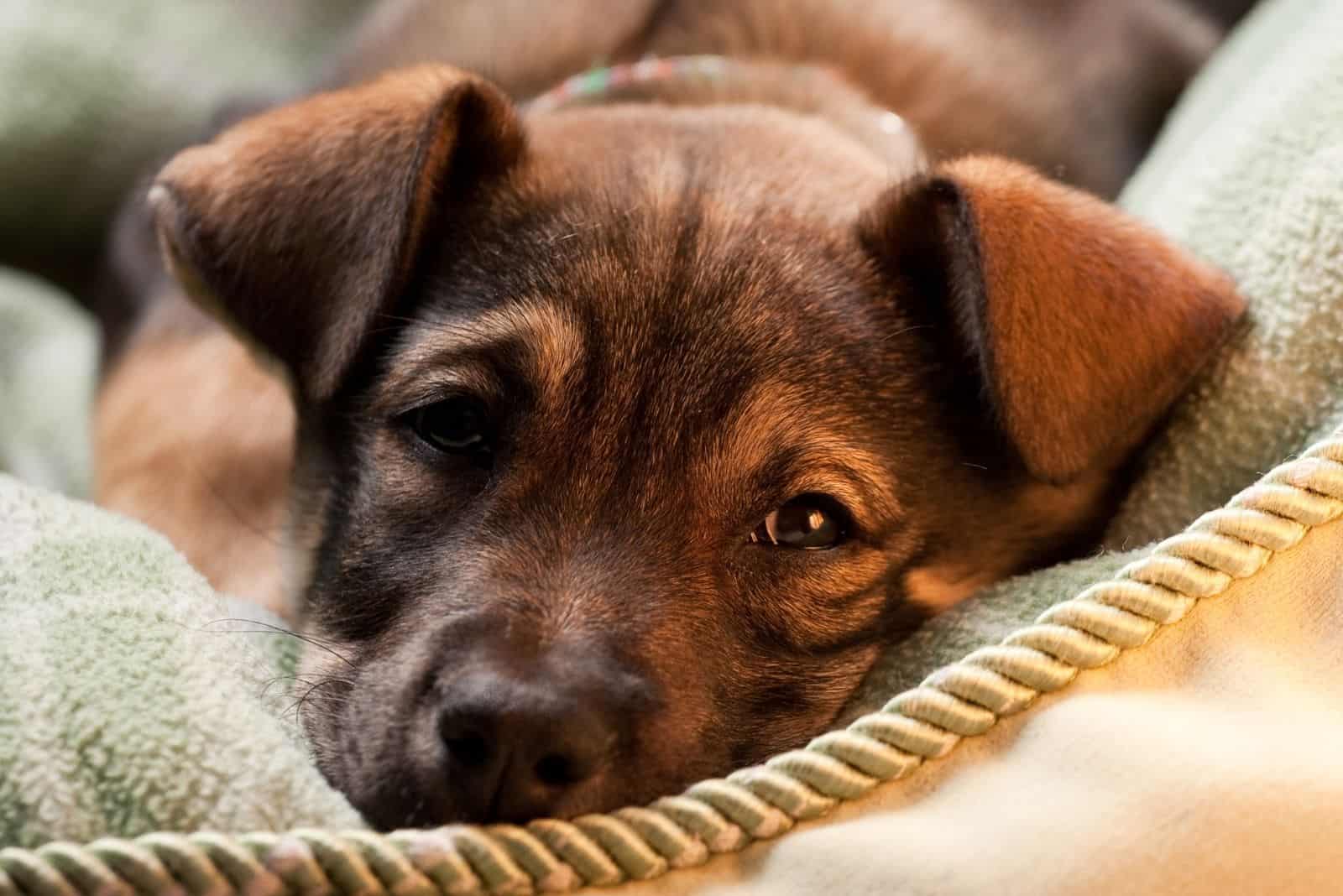
Before you get yourself a new mixed-breed best friend, you should know what you’re getting into. Adequate care is essential if you want your German Shepherd – Mastiff mix to grow into a healthy, happy dog.
Here is how to properly take care of your new large-breed pup.
Grooming
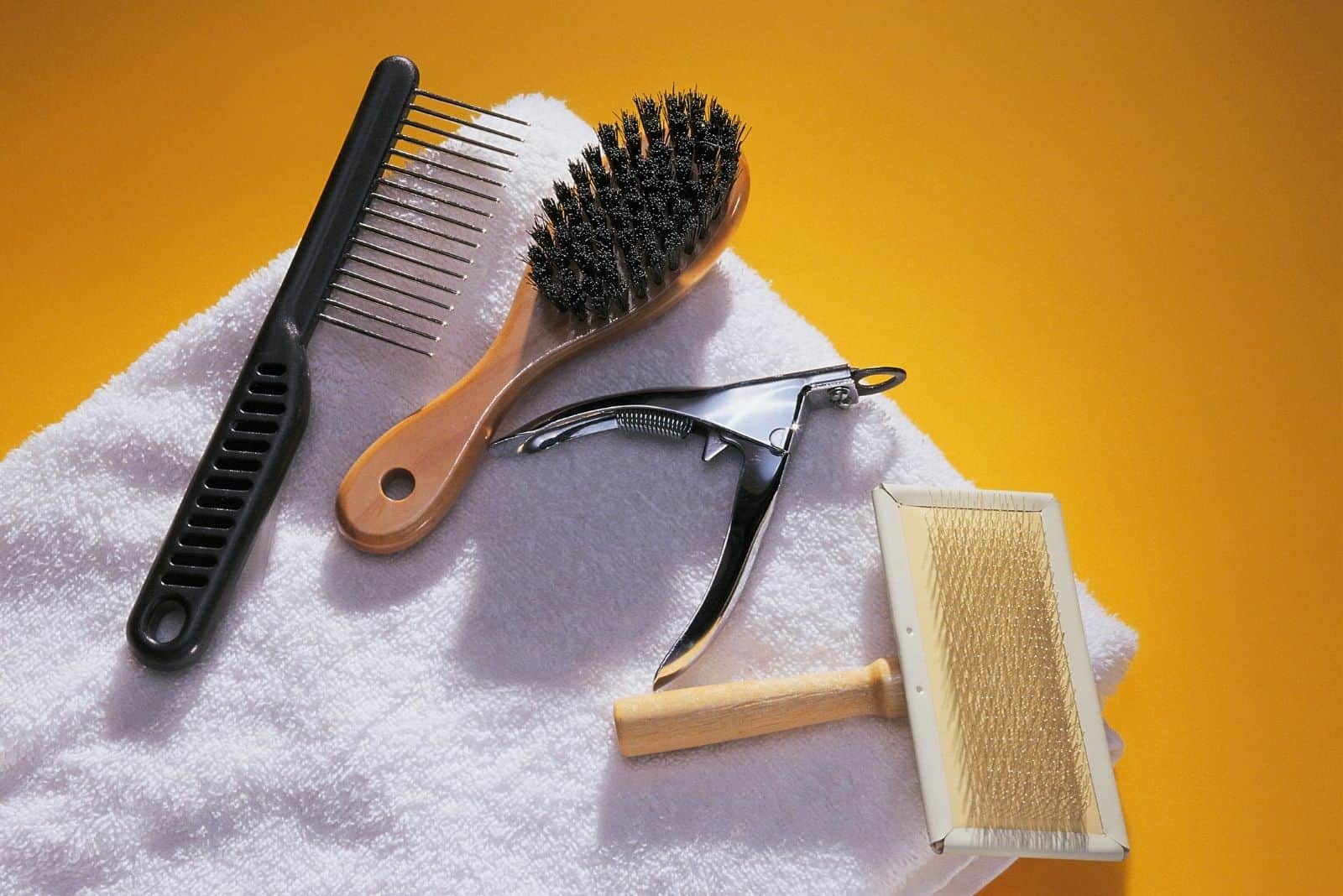
On most occasions, Bullmastiffs have a short coat that doesn’t shed too much; therefore, you likely won’t spend a lot of time grooming them. Still, these dogs can get smelly if you don’t bathe them regularly.
Opposite to that, some German Shepherds do have medium or even long coats. Their fur has several layers, so you need to groom them often. In fact, there is an ongoing joke about this breed as being a “German Shedder”.
As it is with any mixed breed, it’s challenging to predict what a Bullmastiff – German Shepherd mix’s fur will be like. Some German Shepherd features will certainly remain, so be prepared for a bit more care than a purebred Bullmastiff would need.
If your Mastiff Shepherd has a short coat, you won’t have too much to worry about. Give him a monthly bath, and this should be enough. Just make sure you brush him before a bath. This is a good trick to prevent shedding.
In the case of a medium-length coat, you can expect to brush your pooch every other day. Bathe him when needed, but try to make this happen at least twice a month. Thick German Shepherd fur won’t go too well with a Bullmastiff’s smell.
If you end up with a dog that has long layers and a thick undercoat, prepare to brush him daily. You may even want to take him to a groomer once or twice a year to keep his fur untangled. Also, it would help if you bathe your dog regularly.
Training
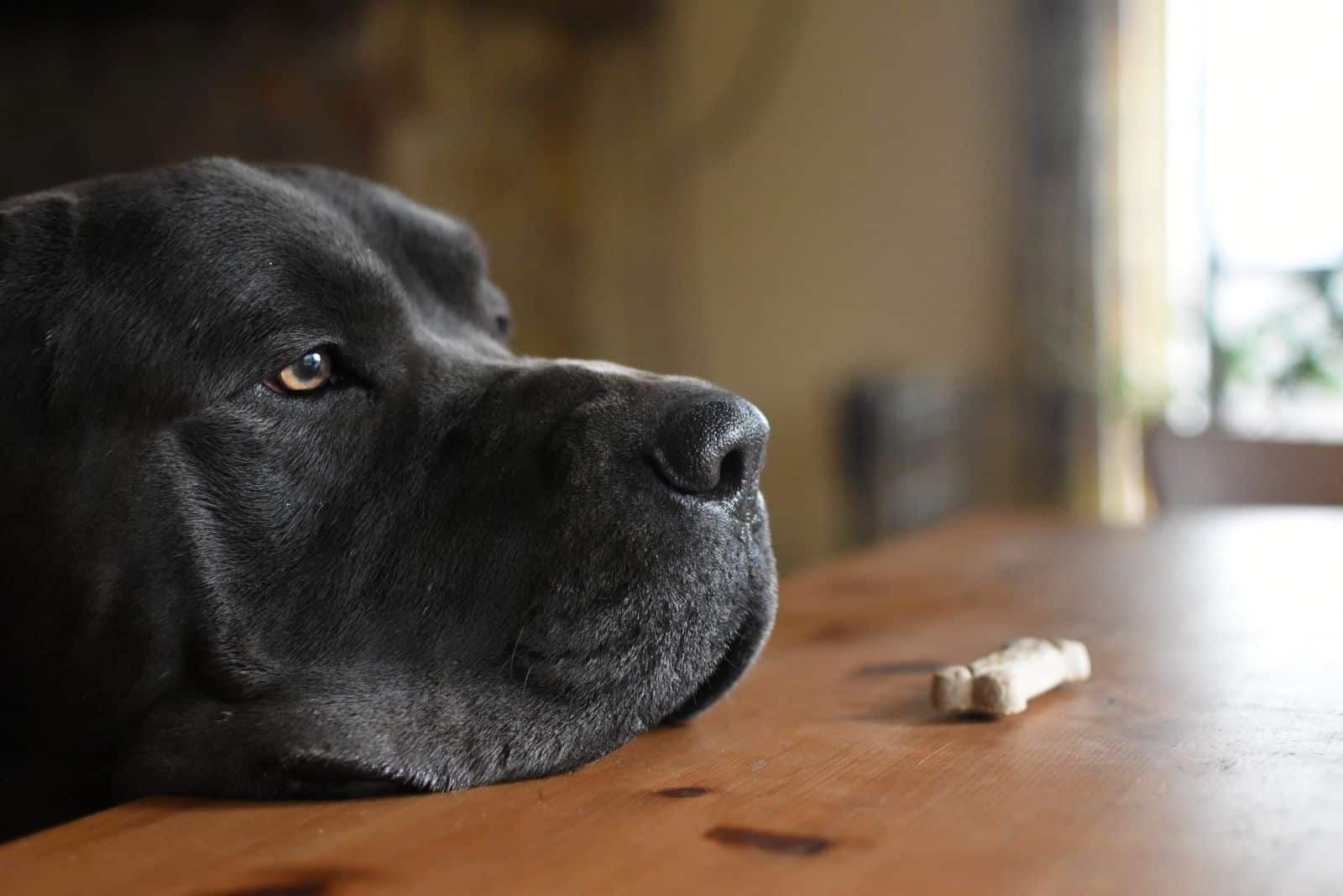
Training is crucial for any dog, especially if you’re dealing with a large breed. If you want to have a good pup, then you need to teach him how to behave.
This is a rule regardless of a dog’s breed. Socialization, care, and proper training are the keys to a well-mannered dog.
On no occasion should you leave your Bullmastiff – German Shepherd mix untrained. They are a large, powerful, and highly intelligent mixed breed that will likely be mischievous if left to their own devices like an old puppy.
When dealing with such a large breed, you should start with obedience training as soon as you have a somewhat older pup.
In fact, the best time to start training is when he is around eight weeks old. This is considered the adequate age when a puppy should join your family.
So, why is training so necessary for a Mastiff Shepherd? Let’s look at his ancestry. Bullmastiffs are strong and stubborn dogs. Despite their mild temperament, they can easily overpower a human.
German Shepherds, on the other hand, are high-energy dogs, and they can be quite destructive if left unattended.
When you mix these two breeds, you get a large dog that will want to cuddle and run around simultaneously.

Photo from: @thorisbodypositive
If you don’t work with him, then you will likely end up with a gigantic dog that will make a mess everywhere. The worst part is that you can hardly control such a big canine.
Because of this, most experts don’t recommend Mastiff Shepherds to novice dog owners. You’ll have to devote many hours and a lot of energy to obedience training and socialization. This has to start the moment the dog joins your family.
Either Bullmastiffs or German Shepherds would make a great watchdog. They are also considered excellent working dogs. Try to channel their energy into training. If you don’t, then you’ll have problems dealing with your pup as soon as he grows up.
Don’t hesitate to contact a local professional trainer if you aren’t sure how to train your new family member. It is better to invest some money rather than deal with the destruction this mixed breed can make.
Bottom Line
Dealing with a Bullmastiff – German Shepherd mix puppy isn’t the same as dealing with a Bulldog or even a Rottweiler. These are huge dogs that can be somewhat unpredictable.
You need to dedicate a lot of dogtime to them. Still, combining these two loyal breeds has left us with a gigantic cutie that is bound to become everyone’s best friend.
Just like with any large breed, you have to ensure that you give him proper training and care. Also, have your vet on speed dial. While hybrid species tend to be healthier than their purebred ancestors, some issues still remain.
However, with a lot of love – and some tough attitude – a German Shepherd – Mastiff mix will make a beloved and well-behaved member of your family.
Read Next:
• Is The German Shepherd Chihuahua Mix Even A Real Dog Breed?
• Catahoula German Shepherd Mix: An All-Around Working Dog
• Great Dane Bullmastiff Mix – How Great Is The Bull Daniff
